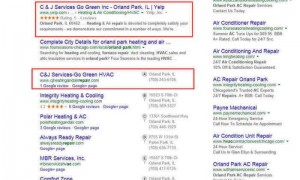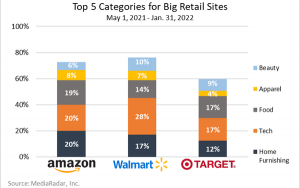September 30, 2016

The subscription business model requires automatic recurring payments to make it easy for customers to use your products and services. It requires charging customers during certain periods so finding the right payment provider is essential. You have to be sure that you will get the money from customers every week or month to predict the cash flow. But, how do you pick the best recurring payment provider for your website?
The first thing you need to do is define your needs. Consider what is more viable for you – building an in-house solution or finding a payment gateway with the recurring payment feature? The in-house system gives you complete control but may be time-consuming and cost too much. If you need recurring payments just for your website, it’s better to choose a partner which specialises in payments.
To accept payments for subscriptions you need both a merchant account and a payment gateway. If you want to get the merchant account on your own, it could be a long and costly process. Instead, consider finding a service with a merchant account. It will save you time and money.
There are lots of payment gateways that offer online payments with a subscription option. For many reasons, choosing a payment gateway (with some additional features) could be the best option for your business. Just consider what do you need to accept recurring payments on your website.
Here are 10 questions you should ask to make the choice easier.
1. Which types of payments do you need?
It’s good to first determine which type of payments your company needs. Do you want to only process recurring payments or also charge the customers for one-time payments (e.g. for a specific or extra items).
A payment gateway would be the best option for processing recurring payments and charging a one-time fee from customers.
2. Does it work in your country?
The location of your business matters. Not every payment gateway will provide their solution for businesses in your country. This is usually due to banking regulations (our solution, for example, is focused on the EU market). So, if your company is registered in one of the European countries, it’s better for you to connect with a European payment provider with the European acquiring bank behind it.
Of course, this doesn’t mean that when you’re incorporated in the EU, you can’t sell globally. Find the payment gateway that offers a variety of currencies.
There are also providers that have their operations in many countries (e.g. both in Europe and the USA), but check with them first before you choose.
3. How long does the integration process take?
This can’t be ignored either. The truth is that regardless if you have developers on your board or you’re a non-technical person, the integration process has to be fast and easy. There are still many solutions that require weeks of setting up before you can start charging your customers (and you probably want to avoid that).
You need to find the payment gateway with a clean and robust API. Then it will only take you hours to put the payments on your website and you won’t lose money.
4. Is setting up a payment scenario easy?
Check if the recurring payments you consider are flexible. What does it mean? Most business owners think of subscriptions as making the same charges to the same customers for a period. But you should also think about a variety of plans or a hybrid plan which will be more convenient for your customers. You can make an unlimited number of plans to improve customer retention, so you have the possibility of offering a variety of billing cycles with flexible time periods and multiple pricing levels.
There are few types of well-known payment schedules based on a required number of payments for a certain period. You can offer
- a limited number of payments charged at regular intervals,
- unlimited number with the possibility of canceling the subscription at any time,
- schedule when a limited number of payments change to unlimited ones.
Does a provider offer the possibility of modifying the billing frequency? Does the system allow you to update the subscription amount? Can you change the card details in running subscriptions, e.g., because of expiration date? Compare your needs with the features the payment provider offers to be sure that you will have everything you may need in the future.
Find a solution with an API that gives you the flexibility and the ability to build your own payment scenario. Also ask for additional features, such as payment tracking, payment reporting or fraud management tools.
5. Is it PCI compliant?
Being PCI compliant is a must when you store, process or transmit credit cards. It’s also better to choose the solution with PCI compliance, so you don’t have to become PCI compliant (which could be costly for you). Ensure that the solution you want to choose meets these requirements.
6. Are the payments secure?
This one links to the previous point. Note that security issues are as important as the entire payment experience for your customers. Give them the most secure solution possible to ensure that they don’t have to worry about the safety of their data. For this reason, it’s crucial to choose the solution with data encryption and that stores the credit card information securely.
7. Is the pricing transparent?
When you choose a payment gateway you need to keep in mind that payment providers offer various fee structures. The good news is that most payment gateways won’t charge extra fees for the recurring payment option. Usually, you are charged per transaction, but check closely to make sure there aren’t any additional fees (such as set up or monthly fees).
Moreover, when you process a high volume of transactions, you can try to reduce expenses by negotiating fees with the recurring payment provider.
8. Does it support free trials?
A free trial makes it easier for your customers to make a well-thought out decision. They can use your product or service for a certain period and then decide if they want to buy a subscription. Usually, customers are charged automatically after the free trial period ends unless they resign before.
9. Does it work on mobile devices?
The number of mobile consumers is growing year by year. When you choose a recurring payment provider, make sure it supports mobile payments. It should also be well-optimized to provide a smooth experience for your customers.
10. What about tech support?
Before you choose the right recurring payment provider, ensure that they have very responsive and helpful customer support. It’s a no-brainer when it comes to online payments. You need to make sure that you, as well as your customers, won’t be on your own if problems occur.
The right payment gateway with recurring payments can support your business in many ways. It will give you the flexibility of choosing a payment scenario and offer a high level of security.
Most important is giving the customers a user-friendly experience and the most convenient payment solution. Now it’s up to you to choose the best solution that will meet your needs. Look at payments on your website from your customers’ perspective and choose one that provides the best experience for them.
Business & Finance Articles on Business 2 Community(119)






